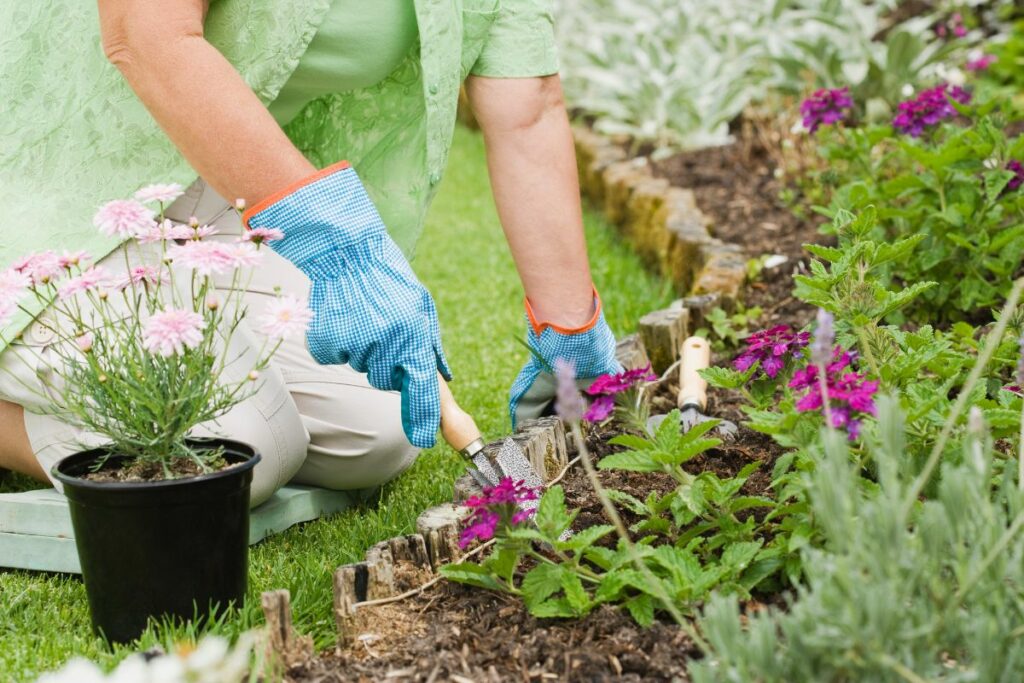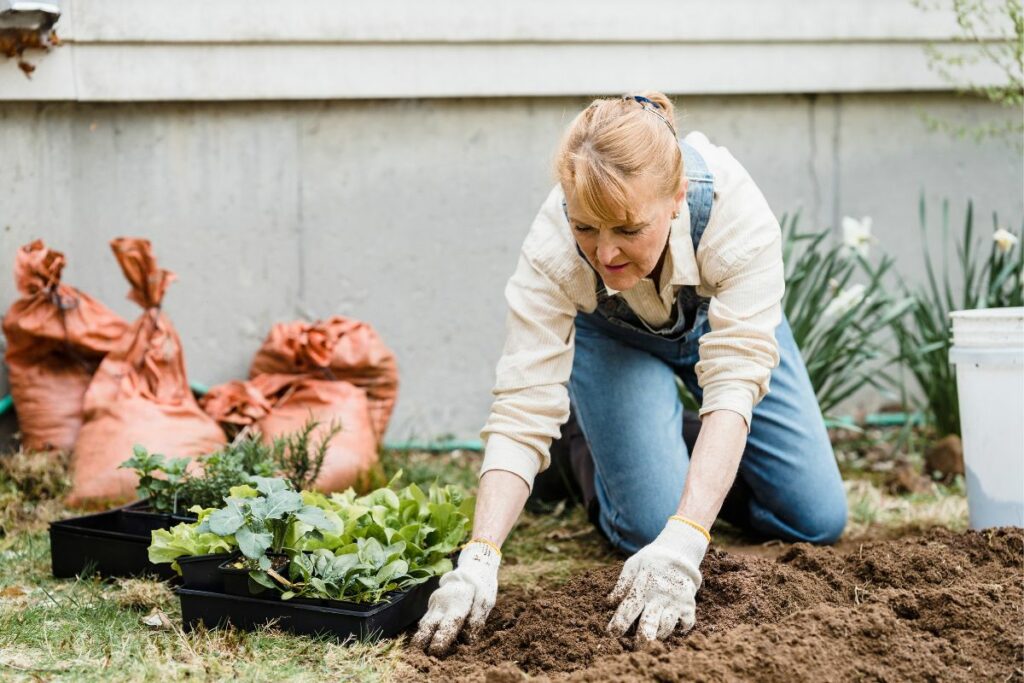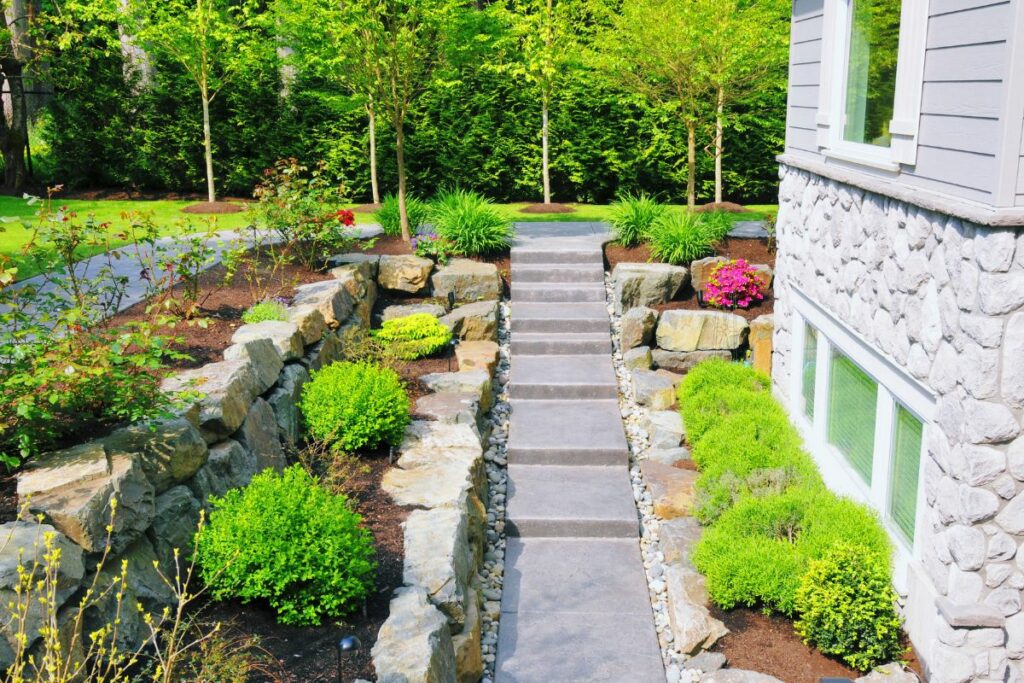Eco-friendly landscaping refers to designing and maintaining outdoor spaces in a way that minimizes negative environmental impacts. It prioritizes sustainability by using eco-conscious practices and materials. Adopting eco-friendly landscaping techniques can significantly reduce your carbon footprint and contribute positively to the planet.
Learn the Basics of Eco-Friendly Landscaping
Benefits of Eco-Friendly Landscaping

Some key environmental benefits include conserving water, promoting biodiversity, reducing chemical pollution, and creating healthier ecosystems.
Reduced Water Usage and Conservation
You can significantly reduce your water bills by incorporating eco-friendly landscaping practices. Techniques like xeriscaping, which involves using drought-tolerant plants and efficient irrigation systems, help minimize water usage. This not only saves money but also contributes to water conservation, especially in regions facing water scarcity.
Minimization of Chemical Usage
When you opt for eco-friendly landscaping, you reduce the need for chemical fertilizers, pesticides, and herbicides. These chemicals can be harmful to your health, your pets, and the environment. By using organic alternatives and practicing natural pest control methods, you create a safer and healthier outdoor environment for everyone.
Support for Local Biodiversity
Planting native species in your yard encourages local wildlife to thrive. Native plants provide food and shelter for birds, butterflies, bees, and other beneficial insects. This biodiversity helps maintain a balanced ecosystem and supports pollination, which is crucial for your garden’s health and productivity.
Contribution to a Healthier Environment
By embracing eco-friendly landscaping, you play a part in reducing air and water pollution. Traditional landscaping practices often involve gas-powered equipment and chemical treatments that release harmful emissions. Switching to electric or manual tools, using organic fertilizers, and planting trees for shade and air purification can improve air quality and contribute to a cleaner environment for everyone.
The benefits of eco-friendly landscaping go beyond your immediate surroundings. They extend to the wider community and the planet as a whole, making your efforts to create a sustainable outdoor space truly impactful.
Key Principles of Eco-Friendly Landscaping

When it comes to creating an eco-friendly landscape, certain key principles guide sustainable practices that benefit both your outdoor space and the environment. Let’s explore these essential principles in detail to help you create a truly sustainable and beautiful landscape.
Water Conservation: Sustainable Practices for a Greener Future
Techniques like xeriscaping and rainwater harvesting are key aspects of eco-friendly landscaping. Xeriscaping involves designing your landscape to minimize water usage by selecting drought-tolerant plants, improving soil quality, and using efficient irrigation methods.
Rainwater harvesting captures and stores rainwater for later use in watering your plants, reducing reliance on municipal water sources and conserving water resources. Implementing these water conservation practices not only saves water but also helps mitigate the effects of drought and supports a more sustainable approach to landscaping.
Soil Health: Nurturing the Foundation of Your Garden
Maintaining healthy soil is essential for the success of your eco-friendly landscape. Organic soil amendments, such as compost and organic matter, improve soil structure, fertility, and moisture retention.
Composting kitchen scraps and yard waste not only reduces waste sent to landfills but also provides nutrient-rich soil amendments for your plants. Healthy soil supports plant growth, enhances root development, and promotes overall garden vitality. By prioritizing soil health, you create a sustainable foundation for a thriving landscape ecosystem.
Wildlife Habitat: Creating a Haven for Local Fauna
Another fundamental principle of eco-friendly landscaping is designing your landscape to accommodate local wildlife. Incorporate elements like bird feeders, bird baths, nesting boxes, and native plants that attract pollinators like bees and butterflies.
Create diverse habitats with varying plant heights, textures, and structures to accommodate different species. Providing shelter, food sources, and water sources encourages biodiversity and fosters a healthy ecosystem in your yard. By nurturing a wildlife-friendly environment, you contribute to the conservation of local species and enhance the ecological balance of your landscape.
Energy Efficiency: Harnessing Nature’s Cooling and Heating Benefits
Strategic placement of shade trees and plants can significantly impact the energy efficiency of your home. Shade trees can reduce the need for air conditioning by providing natural cooling and reducing heat gain through windows and roofs.
Planting deciduous trees that lose their leaves in winter allows sunlight to warm your home during colder months. Additionally, creating windbreaks with trees and shrubs can reduce heating costs by blocking cold winds in winter. By harnessing nature’s cooling and heating benefits, you can lower energy consumption, reduce greenhouse gas emissions, and create a more comfortable and sustainable outdoor environment.
Implementing these key principles of eco-friendly landscaping benefits the environment and enhances the beauty, functionality, and sustainability of your outdoor space. You can transform your yard into a thriving, eco-friendly oasis by making conscious choices in plant selection, water management, soil health, wildlife habitat creation, and energy efficiency.
Designing Your Eco-Friendly Landscape

Designing an eco-friendly landscape involves thoughtful planning and consideration of various factors to create a sustainable and beautiful outdoor space that aligns with your environmental goals. Here are key aspects to focus on:
Assessing Your Yard: Understanding Your Landscape’s Needs
Before diving into landscaping projects, take time to assess your yard’s characteristics. Consider factors such as soil type, sun exposure, drainage patterns, and existing features like trees, slopes, or structures. Understanding these elements will help you make informed decisions about plant selection, water management, and overall design to ensure optimal growth and sustainability in your landscape.
Plant Selection: Choosing Wisely for a Thriving Garden
Selecting the right plants is crucial for an eco-friendly landscape. Opt for native plants that are well-suited to your region’s climate and soil conditions. Native plants require less water, fertilizer, and maintenance compared to non-native species, making them more sustainable choices.
Incorporate drought-tolerant species to minimize water usage and promote resilience in times of water scarcity. Consider factors like plant size, growth habits, and seasonal interest to create a balanced and visually appealing garden that supports local wildlife and enhances biodiversity.
Water Management: Efficient Irrigation for Conservation
Efficient water management is essential for eco-friendly landscaping. Design and install irrigation systems that deliver water directly to plants’ root zones, reducing water waste from runoff and evaporation. Use drip irrigation, soaker hoses, or low-flow sprinklers to target water where it’s needed most.
Incorporate rain sensors or smart irrigation controllers to adjust watering schedules based on weather conditions, further optimizing water usage. Mulching around plants helps retain soil moisture, suppress weeds, and improve overall water efficiency in your landscape.
Hardscape Elements: Sustainable Materials for Durability and Beauty
Choose sustainable materials that minimize environmental impact when adding hardscape elements like pathways, patios, and edging to your landscape. Opt for locally sourced materials to reduce transportation emissions and support local economies.
Consider permeable paving options like gravel, permeable concrete, or porous pavers to allow rainwater infiltration, reduce stormwater runoff, and replenish groundwater. Incorporate recycled or reclaimed materials in your hardscape design for a unique, eco-friendly touch.
Maintenance Practices: Nurturing Your Landscape with Care
Implementing eco-friendly maintenance practices is key to sustaining a healthy and vibrant landscape. Minimal lawn care involves mowing less frequently and at higher settings to promote deeper root growth and drought tolerance in grass.
Use organic fertilizers and natural pest control methods to avoid harmful chemicals that can harm beneficial insects and soil health. Mulch garden beds to suppress weeds, retain moisture, and improve soil structure over time. Regularly inspect and maintain irrigation systems to ensure efficient water distribution and prevent leaks or wastage.
By focusing on these key aspects of designing and maintaining your eco-friendly landscape, you can create a sustainable outdoor oasis that enhances the beauty of your surroundings while conserving natural resources and supporting a healthier environment.
Work with Pros to Design Your Eco-Friendly Landscaping Project
Creating an eco-friendly landscape that’s both beautiful and sustainable requires expertise and careful planning. Consider partnering with landscaping professionals to design and execute your eco-friendly landscaping project. Experienced professionals can provide valuable insights, recommend the best practices and materials, and bring your vision to life while ensuring environmental responsibility.
At Glover Landscapes, we specialize in eco-friendly landscaping solutions that prioritize sustainability without compromising on aesthetics. Our team of experts is dedicated to transforming your outdoor space into a thriving and environmentally conscious oasis.
Get started today by calling (404) 510-6437 or submitting a request for a free project quote through our website form.
Let’s work together to design and create a sustainable landscape that enhances your home’s beauty and contributes to a greener future for our planet.


